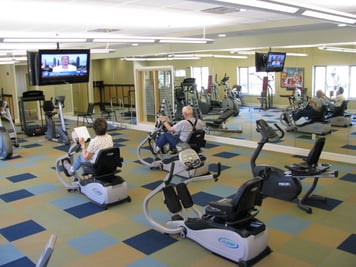As communities have continued to adapt their concepts of and practices around what it means to provide wellness for residents, we have seen program offerings, cultural shifts, and amenity updates that really run the gamut. Some organizations have molded their own definitions of the dimensions of wellness along with branding symbols and adjustment of community taglines. In other cases, senior living communities are just putting a toe in the water by beginning the wellness dimension conversation with residents and employees.
There’s plenty of room for creativity; communities absolutely can (and should) put their own stamp on how they intend to execute on resident wellness. But there’s one trend I’ve seen in resident wellness that gives me pause: situating wellness in a clinical setting with a clinician at the helm. The most common articulation of this is tasking a registered nurse (RN) as the community wellness director and positioning all things wellness from the home base of the clinic, which is called the “wellness center.”
Differentiating Factors for CCRC Prospects
I’ve written before about the two primary areas in which communities can position themselves to senior consumers as being a better living option than aging at home. The first differentiator is in the area of care/safety for seniors as they age. The other primary area where communities can stand out from competition lies in residents’ opportunities to experience new places and people, to learn new things, to engage in stimulating discussions, and to participate in strategic reminiscing—all in ways that are unique to a community culture.
That second differentiator is your wellness program; it includes programs/events, dining, the physical environment, social opportunities, spiritual connection, emotional care, and intellectual opportunities. It may touch, or run into, a clinical environment. But situating your wellness program in a space that provides primarily reactive care to illness misses the boat entirely and sends a mixed message to your residents.
Creating an environment that maximizes well-being requires us to get our heads out of only physical health (and I mean fitness too). It requires adapting the dimensions of wellness into a person-focused framework like the one offered by The Eden Alternative’s domains of well-being.
Blending the Factors Dilutes the Senior Wellness Message
Whether or not an RN with the right background can build your programming strategy and support a built environment that truly facilitates resident well-being depends on the knowledge, skills, abilities, and passions of the RN. I would suggest, however, that physically housing your wellness program in a medical environment, such as your health clinic, will limit your ability to deliver on a message of distinction about what it means to live well in the community because you’re blending the care/safety distinction with the wellness differentiator. By marrying them both that tightly, you’re diluting the message. For seniors who know they need the clinical support but aren’t quite ready to address that for themselves (and how many prospects are psychologically in this place?), they won’t hear a message about wellness that stems from the clinical care.
I’m not advocating that the clinic and the wellness offerings operate in distinct silos. I am, however, suggesting that wellness doesn’t start with medication management, blood pressure regulation, or access to a podiatrist. Helping individuals be individually well begins with understanding what creates purpose for them. The clinical care is a byproduct of age. Choices on how to live well are core to who the individual is. Attention to that fundamental element of each resident deserves staff and spaces that are dedicated to the lifestyle you’re promising each resident.


